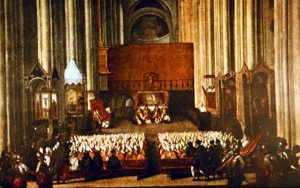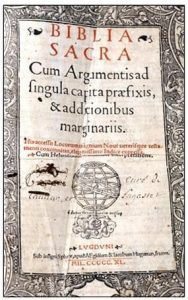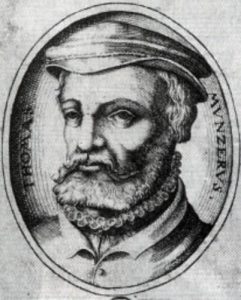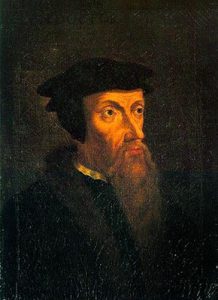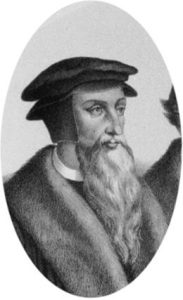In Trent, the council discontinuously met over 18 years
A reform of the Church and of the clergy was called for by humanists and some members of the clergy for years, because churches were getting empty, behaviours of the regular and secular clergy were criticised, priests often were ignorant. The 5th council of Latran ended in 1517 but had come to nothing.
The development of the Reformation urged Charles V to call for another council meeting. Pope Paul III sent the first notice in 1536, but the council finally met in Trent, on Empire ground, in 1545.
The council of Trent, through five popes’ reigns, held 25 sessions over 18 years, with long interruptions. Around 1550, during the second session, Charles V asked a Lutheran Protestant delegation to attend, but no dialogue ensued.
The council enabled the Church to define its dogma and discipline:
- faith has two origins -i.e. the Bible and the tradition,
- man’s salvation rests on God, but also on the believer’s participation,
- seven sacraments still exist,
- Christ’s presence in the bread and the wine of the communion is real and substantial,
- the canon of the Scriptures, namely the list of the books in the Bible considered as God given, is determined,
- indulgences are kept, but not to be marketed,
- rules concerning ecclesiastic discipline are established,
- inquisition is maintained,
- the purgatory is asserted and prayers for the deceased still required,
- the legitimacy of saints’ worship is asserted.
An application of the catholic Reformation in Milan
The Reformation of the Catholic Church was implemented thanks to the personal involvement of a few bishops. Charles Borromeo, bishop of Milan, set the example by living on his diocese and incessantly travelling around. He founded a seminar for priests, re-instituted the discipline – e.g. nuns were no longer allowed out of their convents. He also founded hospitals and schools.
In the wake of the council of Trent
The results of the council were many and the consequences as follows :
- promulgation of the roman catechism,
- publication of the Vulgate (the Bible in Latin),
- reform of the breviary and the missal,
- the council of Trent mainly defined the Catholic dogma.
Throughout Europe religious orders publicised the Counter-Reformation, especially the Jesuits, founded in 1540, who created universities and colleges. Catholicism had found the means to stop the expansion of Protestantism and to drive it out of part of the German Empire.
The Catholic Reformation
or Counter-Reformation
in 16th century
Via Felice e Gregorio Fontana, 38121 Trente, Italie

